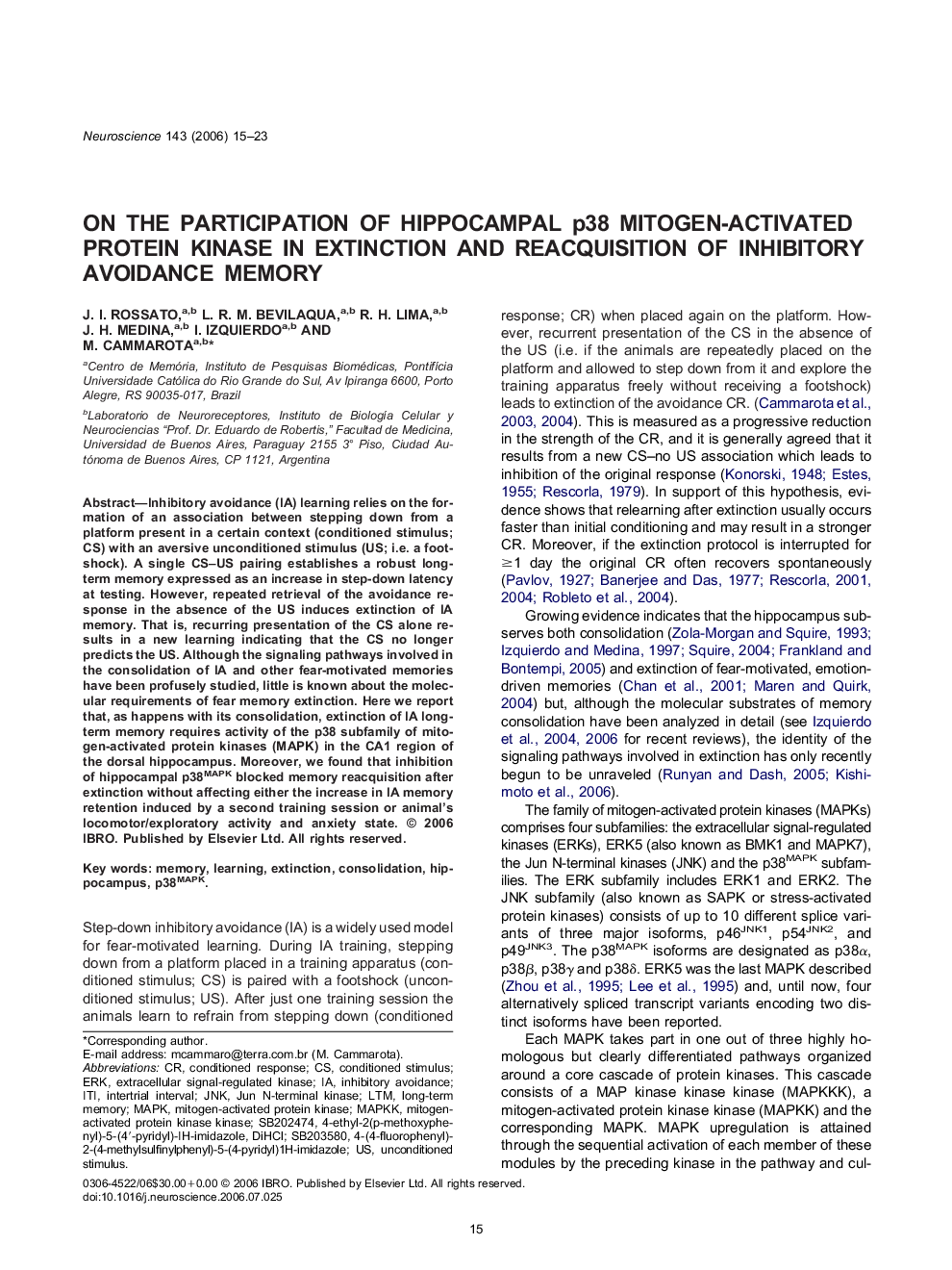| Article ID | Journal | Published Year | Pages | File Type |
|---|---|---|---|---|
| 4341409 | Neuroscience | 2006 | 9 Pages |
Inhibitory avoidance (IA) learning relies on the formation of an association between stepping down from a platform present in a certain context (conditioned stimulus; CS) with an aversive unconditioned stimulus (US; i.e. a footshock). A single CS–US pairing establishes a robust long-term memory expressed as an increase in step-down latency at testing. However, repeated retrieval of the avoidance response in the absence of the US induces extinction of IA memory. That is, recurring presentation of the CS alone results in a new learning indicating that the CS no longer predicts the US. Although the signaling pathways involved in the consolidation of IA and other fear-motivated memories have been profusely studied, little is known about the molecular requirements of fear memory extinction. Here we report that, as happens with its consolidation, extinction of IA long-term memory requires activity of the p38 subfamily of mitogen-activated protein kinases (MAPK) in the CA1 region of the dorsal hippocampus. Moreover, we found that inhibition of hippocampal p38MAPK blocked memory reacquisition after extinction without affecting either the increase in IA memory retention induced by a second training session or animal’s locomotor/exploratory activity and anxiety state.
